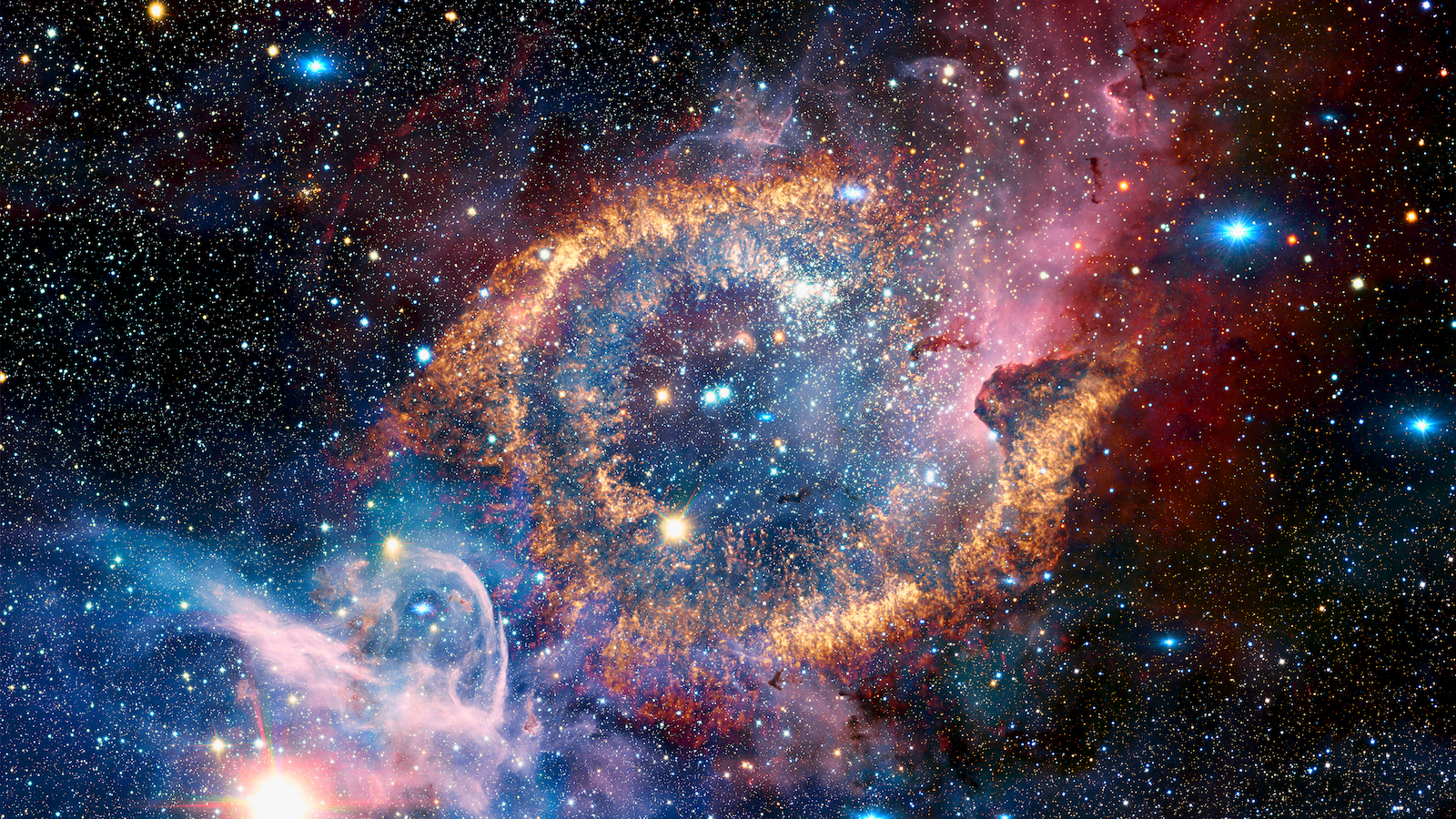
Astrophysicists have used artificial intelligence (AI) to precisely estimate five of the universe's six "settings" with unprecedented precision. The system could one day help researchers crack the mystery of the Hubble tension.
Scientists use six cosmological parameters to describe the large-scale makeup of our universe. These describe the density of its ordinary matter, or baryons; the density of dark matter and dark energy; and the conditions immediately following the Big Bang — including the universe's opacity and clumpiness.
Getting precise estimates of these numbers is important for understanding how our universe began and how it will evolve. But traditional methods typically only estimate these parameters by looking at the way galaxies are spread out over large scales.
By applying AI to the problem, the researchers were able to extract numbers for the parameters across smaller scales, yielding a result for our universe's matter clumping that had less than half the uncertainty of previous results. The scientists published their findings Aug. 21 in the journal Nature Astronomy.
"Each of these [telescope] surveys costs hundreds of millions to billions of dollars," study co-author Shirley Ho, a group leader at the Flatiron Institute's Center for Computational Astrophysics (CCA) in New York City, said in a statement. "The main reason these surveys exist is because we want to understand these cosmological parameters better. So if you think about it in a very practical sense, these parameters are worth tens of millions of dollars each. You want the best analysis you can to extract as much knowledge out of these surveys as possible and push the boundaries of our understanding of the universe."
The researchers trained their AI system on 2,000 models of box-shaped universes, each with different cosmological settings and muddied data to reflect the limitations in real-life observations. This enabled their model to spot patterns in how galaxies looked based upon the alterations made to each universe's settings.
Then, the researchers presented the AI with 109,636 real galaxies measured by the Baryon Oscillation Spectroscopic Survey. The system produced estimates for the cosmological parameters that were as precise as a traditional survey using four times as many galaxies.
Past efforts to estimate the parameters "haven't been able to go down to small scales," study lead author ChangHoon Hahn, an associate researcher at Princeton University, said in the statement. "For a couple of years now, we've known that there's additional information there; we just didn't have a good way of extracting it."
The researchers have proposed a number of applications for their method, possibly the most exciting of which will be to study the Hubble tension. For years, scientists have been locked in a fierce debate over the tension — a problem which arises from mismatched estimates showing the universe expanding at different rates depending on where in space astronomers look.
By feeding data from new cosmic surveys coming online in the next few years into their model, the researchers hope to arrive at an understanding of whether the tension can be resolved, or if it demands a completely new model of the universe.
"If we measure the quantities very precisely and can firmly say that there is a tension, that could reveal new physics about dark energy and the expansion of the universe," Hahn said.







